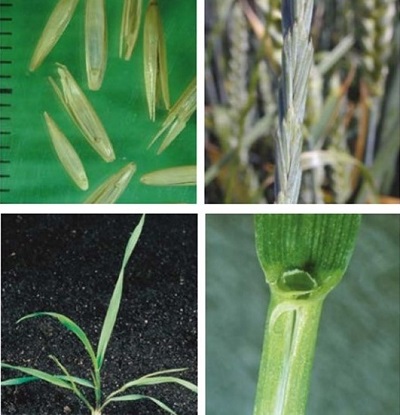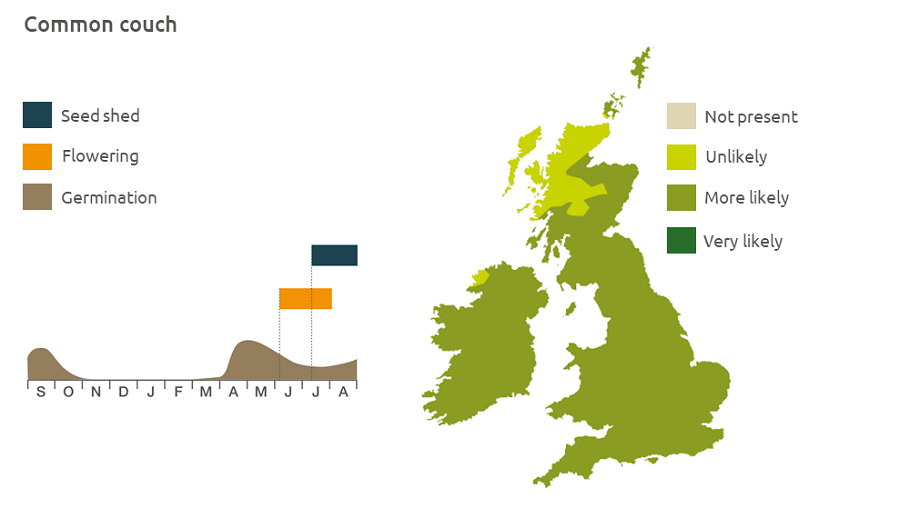- Home
- Knowledge library
- Distribution and biology of common couch in the UK
Distribution and biology of common couch in the UK
Common couch is a highly competitive grass weed. Find out how to identify and control it.
Overview
Common couch (Elytrigia repens) is a highly competitive weed of all crops. Mature shoots die back in the autumn but young shoots can overwinter. The plant can reproduce from rhizome fragments and from seed.
- It is particularly competitive in winter wheat and spring crops
- It has value to biodiversity
Description
It is a tall, very vigorous perennial grass up to 20 cm with white, creeping underground rhizomes growing into large groups or patches. The leaves are hairy on the inner surface and rough at the edges. Spikelets are arranged in two opposite rows.
Key features
Plant: As the rhizome extends, common couch plantlets seem to grow in straight lines. The individual plants have an upright form.
Flower: Spikelets lie flat against the stem so they feel smooth when fingers are moved along the flowerhead.
Lookalikes
The flowerhead is superficially similar to that of rye-grass (Lolium spp.) but in rye-grass the narrow, rounded side of the spikelet is adjacent to the stem.

Location and life cycle

Geographic distribution
Couch grows country-wide on fertile disturbed soils, waste and cultivated ground up to an altitude of 430 m.
Soil type
It is present on all soil types including seaside sands and shingles.
Seed statistics
- Seed longevity: 1–5 years
- Seed weight: 2.5 mg
- Seeds/head: 100
- Seeds/plant: 15–400
Management
Intensive cultivations at 2–3 week intervals will fragment the rhizomes and induce growth, exhausting food reserves. Bury the weakened rhizomes with deep ploughing or spray with glyphosate. Control of couch is cheaper and more effective with glyphosate in uncropped land, stale seedbeds or combinable crops than in break crops.
For advice on herbicides, please speak with your agronomist or adviser.
When was this information last updated?
This page is based on content from the encyclopaedia of arable weeds publication. Since it was first released in 2008, the publication has been redesigned several times but not revised. However, it remains a good foundation for general information on the distribution and biology of weeds.

